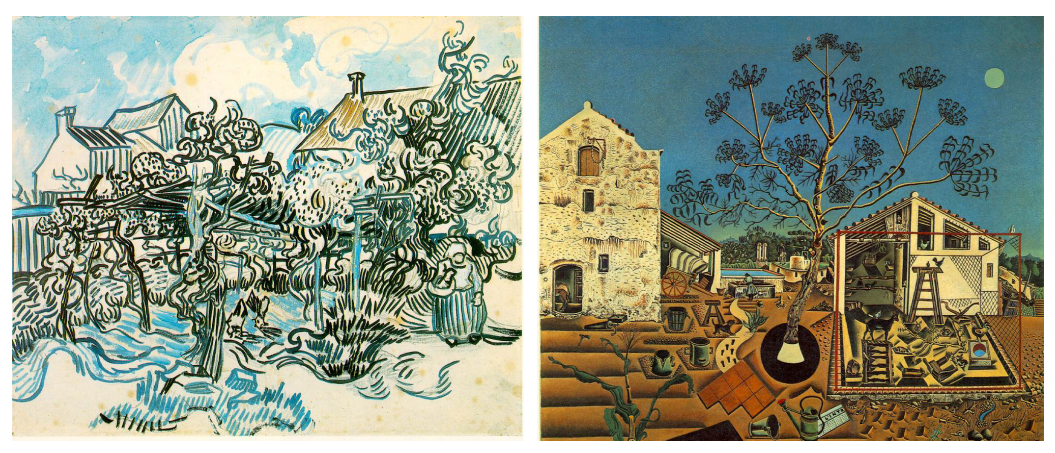
Be warned, art world! In addition to the usual philosophical debates endemic to your disciplines — What is art? What is beauty? Is that a pipe? — you may have to contend with some of the classic science conundrums as well.
Using computer vision algorithms and machine learning techniques, researchers have scanned 1,700 paintings to identify similarities. Notionally, the presence of similarities might suggest an influence of one artist on the other, or a shared influence on both. And, indeed, the search identified similarities between paintings either acknowledged by the artist(s) to have a connection, or documented previously by art historians or critics. It also found what were apparently novel links.
In science, such an undertaking is sometimes called a fishing expedition. Cast a wide enough net and you’re bound to catch something (my own fishing misadventures notwithstanding). Just because two paintings have common elements, however, doesn’t mean there was any artistic connection. There are lots of paintings with birds in them simply because birds are a thing which exist in the world. Color palettes have similarities because the range of the electromagnetic spectrum perceived by humans is fairly consistent across the species. And so on.
In the language of science, we might ask what differentiates correlation from causation. We might also ask how to distinguish common descent or common origin from similarity of function and context. These sorts of discussions can be just as gnarly and esoteric as any debate on the artistic merits of, say, elimination.
Should arts curricula begin to require statistics? Can art history be automated, even partially? Is this a step towards computers creating original works of art?
Andy has worn many hats in his life. He knows this is a dreadfully clichéd notion, but since it is also literally true he uses it anyway. Among his current metaphorical hats: husband of one wife, father of two teenagers, reader of science fiction and science fact, enthusiast of contemporary symphonic music, and chief science officer. Previous metaphorical hats include: comp bio postdoc, molecular biology grad student, InterVarsity chapter president (that one came with a literal hat), music store clerk, house painter, and mosquito trapper. Among his more unique literal hats: British bobby, captain’s hats (of varying levels of authenticity) of several specific vessels, a deerstalker from 221B Baker St, and a railroad engineer’s cap. His monthly Science in Review is drawn from his weekly Science Corner posts — Wednesdays, 8am (Eastern) on the Emerging Scholars Network Blog. His book Faith across the Multiverse is available from Hendrickson.

Leave a Reply